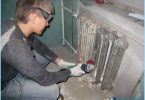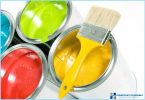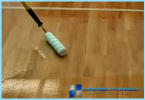The contents
During the finishing works to strengthen the foundations, the builders often use acrylic primer. It can be of different types and to choose it should be based on the type of surface. The varieties and characteristics of this material, read our article.
Why the need for acrylic primer? ↑
From–for non-compliance with technology, Wallpaper and plaster tend to peel off or crack. Often, this comes from–the fact that you have not used acrylic primer as a reinforcing material. It creates on the wall surface a special film that helps:
- to make the base more durable;
- to create a dense and homogeneous structure;
- to make the walls less vulnerable to moisture;
- apply on dark surfaces, bright colors
Also, the compositions of acrylic primer differ in beneficial properties. For example, there are acrylic primer for metal surfaces. It helps to protect them from corrosion. There are acrylic primer with SPF, as well as vegetatively. It all depends on what kind of protective properties you’ll need it.
Types of acrylic primers ↑
Acrylic materials can be reinforcing or penetrating. Firming, for example, has an effect on the surface of the base and glues the particles form a smooth surface for further work. 
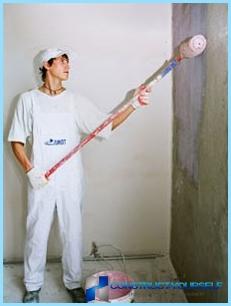
Penetrating acrylic primer not only strengthens the base but gets to its deepest layers. It is suitable for loose surfaces.
Composition acrylic primer is divided as follows:
- water soluble – suitable for interior decorating in a house or apartment. Besides, are absolutely harmless;
- organo – perfect facade primer. This material is resistant to adverse environment and are quite stable in use.
It is important! A huge plus to use any kind of acrylic materials is that they all treated surface is breathable and perfectly passes air.
Depending on the purpose and on the technical characteristics acrylic primer is divided into the following types:
- universal;
- deep penetration;
- adhesive;
- impregnating;
- special.
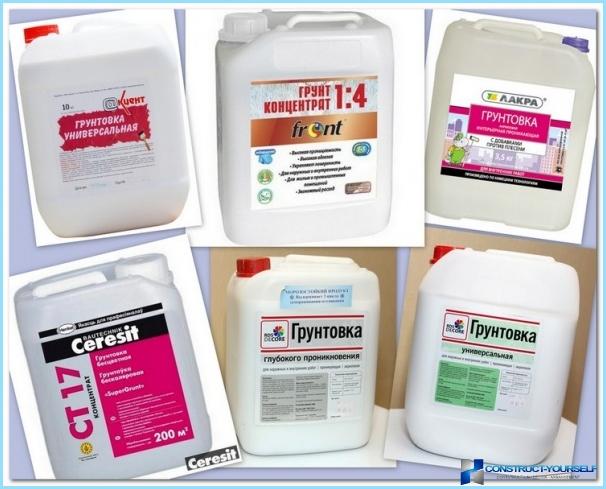
If special preferences and problems in the repair is not worthwhile to use a universal primer. It is used in almost all situations, unless you want to pick a construction material with special properties. This is ideal if you later have to paint the walls and hang Wallpaper in the apartment. We will describe each part and its unique properties.
Universal acrylic primer ↑
This material is intended for coupling of bodies of different kind and composition. Suitable for brick, stucco, concrete, wood, drywall. It makes the surface more durable and greatly reduces the further flow of paint or varnish. In its composition includes a latex acrylic, penetrating agent, antifoaming agent and an antiseptic. The basic properties of a universal acrylic primer for walls:
- the composition has a significant latex content;
- superior quality grip;
- deep penetration;
- suitable for highly absorbent surfaces;
- eliminates the possibility of fungus (as well as moss and mould);
- dries quickly;
- as a result, the coating is flat and smooth;
- the mixture is completely ready for construction works. Nothing to interfere and no need to prepare.
Before starting the construction work to properly prepare the work surface:
- to remove traces of paint;
- remove traces of varnish;
- clean the dust;
- to wash fat;
- allow to dry.
Also need to buy a roller and brush for application. View video on use a universal acrylic primer:
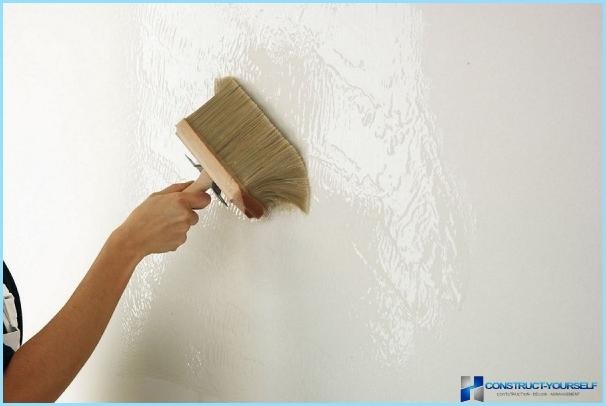
Acrylic primer of deep penetration ↑
If the repair is done first, errors are inevitable. It seems that the issue has been reviewed and the materials bought, and the walls prepared. And now plaster placed and glued Wallpaper.
Just forgot about one small detail – priming of the walls. In a few years, when the time comes new repairs, to do it quickly will not work. The fact that the Wallpaper will come off with the plaster.
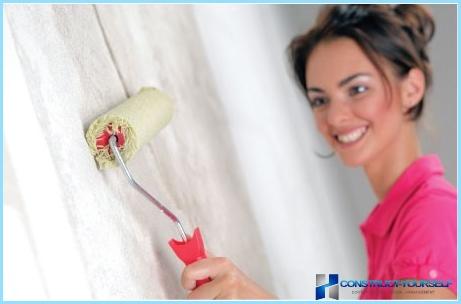
Instead of the small updates you get a repair on an enormous scale. From such troubles will save the timely use acrylic primer for walls of deep penetration. It should be used before:
- the beginning of the tile work;
- nastilanie linoleum;
- sizing of the Wallpaper;
- plaster works;
- parquet works.
The deeper the primer will penetrate into the pores of the surface, the higher will be its density. So, the Wallpaper or the paint will fall safely. The antiseptic will help to avoid the formation of mold or mildew.
This kind of primers contains a part of the finest acrylic polymers, e.g., mixtures from manufacturers of norteks, miners, Eunice. Due to this, it most deeply penetrates the pod walls up to ten millimeters.
When acrylic primer hardens, it forms a specific crystal lattice with holes. The surface is breathable, whereby the water vapor permeability is not reduced. This property also helps to make the coating very smooth.
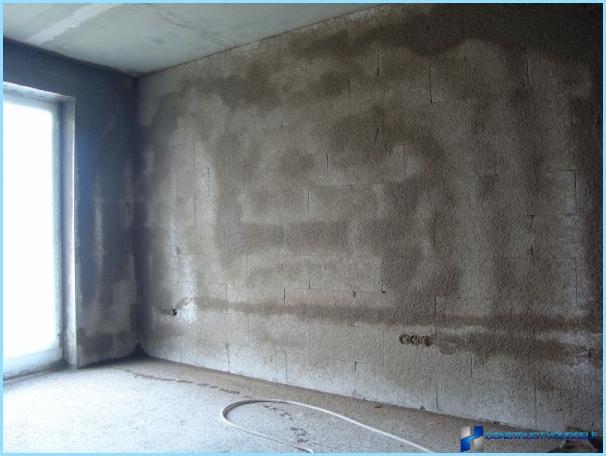
The main function of the deep primer is as follows:
- to connect the smallest particles of dust;
- tightly to connect upper layers to the underlying surfaces.
The specific application of this material. Apply with roller or brush. The best option – polyamide roller. Length of pile: 8 mm For small spaces cushions take the smallest size. For floor ideal plush cushions.
Primer of deep penetration have the certificate of conformity of quality management system requirements of GOST R ISO 9001-2001 (ISO 9001:2000). Certification in accordance with the legislation of the Russian Federation.
Adhesive acrylic primer ↑
This material is ideal for pre-treatment of concrete and stone. Can also be used before applying gypsum or plaster, for the bonding of tiles, or for processing oil and alkyd coatings. Suitable for repair of older homes. The basic properties of the adhesive material:
- creates a rough surface;
- provides the perfect grip with plaster;
- in the solvent;
- the coating is breathable;
- safe for nature.
This kind of primer is the best way to work on loose grounds. They are not considered very reliable and durable, which makes it very hard to conduct repairs.
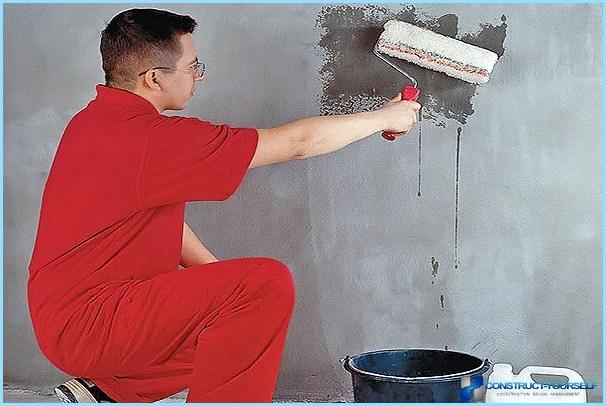
In the composition of such a special impregnating material formulations and adhesive substances. They get inside the base and fill in the cracks, gouges and pinholes.
After a certain time after the processing of adhesive primer deep penetration of the composition hardens. Then the filling of the cavities and the binding of fine particles into one structure.
Impregnating acrylic primers ↑
Necessary to have the absorbent and the treated surface had the same ability.
Suitable for preparation for further colorful works with surfaces of concrete, brick, drywall, fiberboard, particleboard, wood. Provides durability and water resistance of the coating.
To apply this material in one or two coats by brush, roller or spray gun. The second layer should be applied, if the surface is highly absorbent.
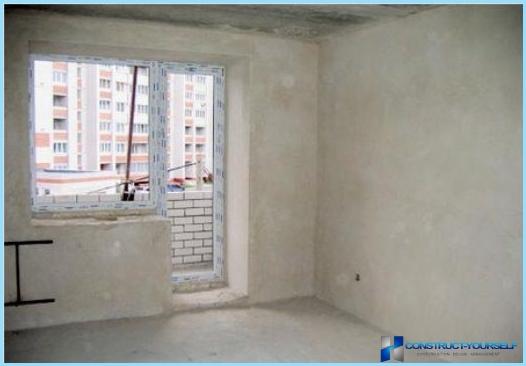
Special acrylic primer ↑
For specific applications it is recommended to use special types of acrylic materials. For example, in working with metal parts should pick a team that will be able to provide protection from corrosion. Depending on the type of metal used the following primers:
- phosphating;
- alkyd;
- alkyd-urethane;
- corrosion.
For wood use very different compounds. Most often acrylic primer for wood surfaces is a white liquid that consists of one component.
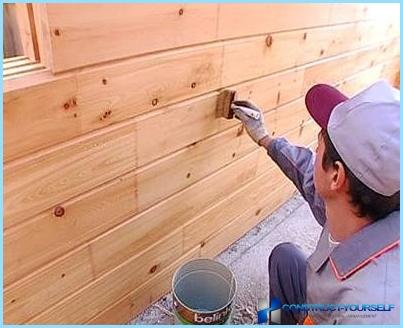
It is used for pre-coloring of the furniture or doors. Once the material dries, it turns dense varnish layer. The surface can be sanded to remove the flaws. The primer will help to save on the paint.
General material specifications ↑
General guidelines for using the primer is quite simple. Apply material in two layers. It is important to allow complete drying of the first, before re-applying.
Dry acrylic primer from 3 to 6 hours and stored in tightly closed containers away from sunlight and only at zero temperature. Allowed the transport of low temperature, but not longer than a month
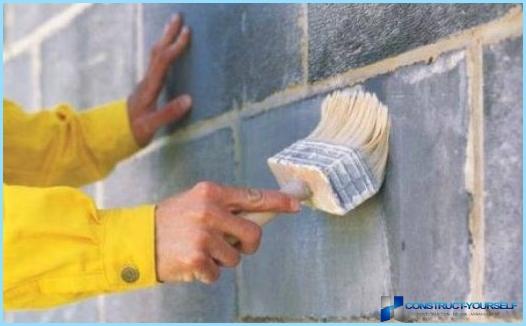
There are also certain standards to use. Before starting work, you need to prepare the wall. The walls must be degreased, cleaned of paint, they must be smooth, clean, dry. Applied primer with a roller or brush.
Tips for applying primer ↑
Usually difficulties in the process of applying does not arise. The process is very similar to the color of the walls, but we should not forget that:
- to use different types of primer on one surface is impossible;
- the brush needs to handle corners and relief areas;
- on drywall, plywood and other smooth, use a roller;
- when choosing guided by GOST;
- if you use the spray – protect your eyes with the help of special mask.
There is a huge selection of acrylic materials. You should choose the one that fits your goals. This will provide you with quality and durable repair.


